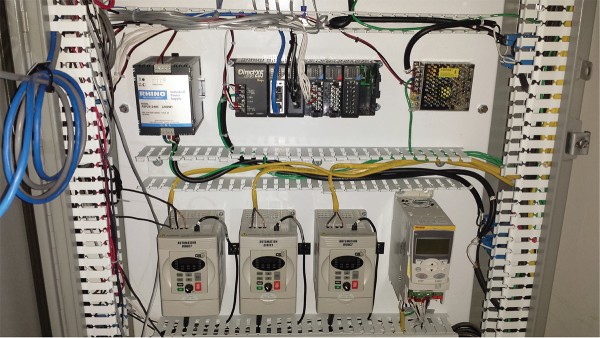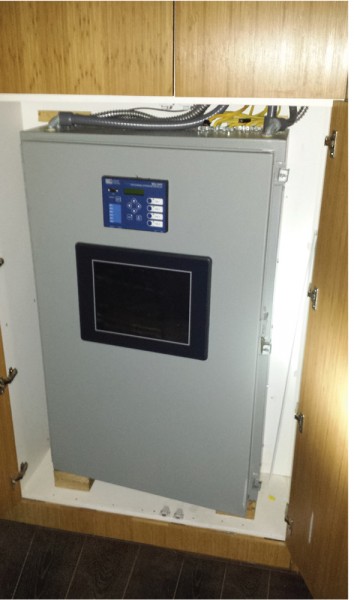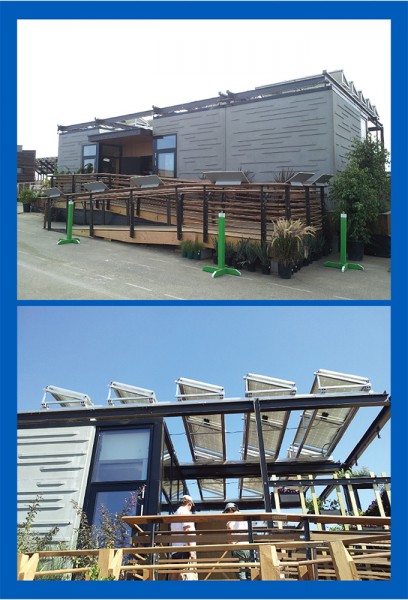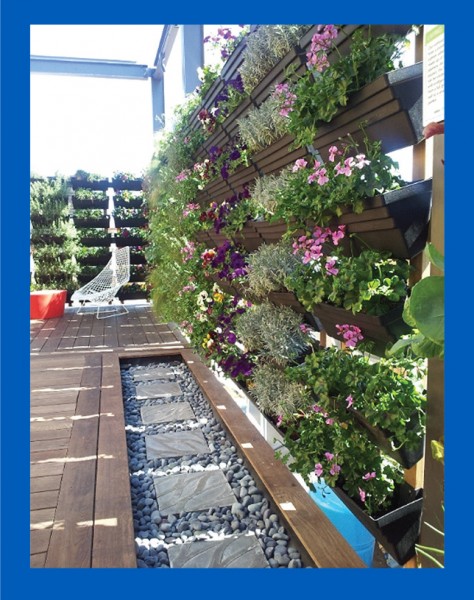UrbanEden, the University of North Carolina at Charlotte’s entry to the Solar Decathlon 2013, is a concept home consisting of four connected indoor and outdoor spaces that create a unique urban living environment.
The interior adapts to maximize comfort year-round and opens to a private, plant-filled exterior living area. Innovations in concrete and glass technology, combined with the creative use of simple technologies, nurture a healthy urban lifestyle that is powered, heated, and even cooled by the sun.
The Solar Decathlon

The Solar Decathlon, a biennial event hosted by the U.S. Department of Energy, challenges collegiate teams to design, build, and operate solar-powered houses that are cost-effective, energy-efficient, and attractive. The purpose of the Solar Decathlon is to educate students and the public about the money-saving opportunities and environmental benefits presented by clean-energy products and design solutions. The event also demonstrates the comfort and affordability of homes that combine energy-efficient construction and appliances with renewable energy systems available today. The program also provides participating students with unique training that prepares them to enter our nation’s clean-energy workforce. 
One of the most unique features of UrbanEden is a retractable rack of solar photovoltaic (PV) panels which is automated using a wide array of AutomationDirect components. The retractable rack remains over the roof in winter to allow light from the sun to stream in through the southern window wall. During the summer, the rack extends over the patio to provide shade and cool the outside living space. This rack is powered by three 1hp inverter duty motors connected to three 40:1 IronHorse® gearboxes. The motors are controlled by three GS2 variable frequency drives, which receive serial commands from a Do-more™ PLC. An array of proximity sensors, and over-travel limit switches are used to position and provide fail-safe operation for the rack. The residents of the home control the movement of the rack via a 15” C-more® touch panel.
The Engineering Challenge
 Charles Truong, the Electrical Engineering Student Lead for UrbanEden summarizes the engineering challenge: “In our initial design concept, the PV Rack System was controlled by a number of micro-controllers interfacing with various components like the HMI, VFDs, and sensors through serial communications and relays. The design itself was complex and required a team of students to design, program, developed, and debug. It would have taken weeks to accomplish this task. We didn’t have the time and resources to dedicate to the design. We needed a simpler and faster solution.”
Charles Truong, the Electrical Engineering Student Lead for UrbanEden summarizes the engineering challenge: “In our initial design concept, the PV Rack System was controlled by a number of micro-controllers interfacing with various components like the HMI, VFDs, and sensors through serial communications and relays. The design itself was complex and required a team of students to design, program, developed, and debug. It would have taken weeks to accomplish this task. We didn’t have the time and resources to dedicate to the design. We needed a simpler and faster solution.”
The Solution: Do-more PLC
Explaining the solution, Truong said, “Then I ran across the Do-more PLC. Even though I had very little PLC programming experience beforehand, I found the Do-more PLC to be straight-forward and easy to use. The programming package was very user friendly and the simulation/debugging interface was outstanding.” He established RS-485 communications with the VFDs quickly using the built-in Modbus instructions, and had them under program control in less than two hours. Additionally, Truong found setting up communication between the C-more HMI and the Do-more was also quick and easy. “I was amazed how easy it was to program the C-more HMI and to use it to access the various data registers in the Do-more PLC. The interface between the HMI and the PLC was seamless.” He concludes, “The AutomationDirect components really made our design and development process a piece of cake. I just wish that moving and reassembling the entire house in California had been so easy!”
The design philosophy used to create the home was inspired by the city of Charlotte’s reinvestment in its urban core as the focal point of a thriving region. The ultra-efficient UrbanEden signifies a commitment to sustainability, vibrancy, diversity, and technological innovation. The house provides sophisticated urban ambiance while helping occupants reduce their carbon footprint by fusing enthusiasm for the city with respect for, and intimacy with, nature.
Additional interesting features of UrbanEden include the use of pre-cast geopolymer cement, thus reinventing an historic building material. This geopolymer cement provides a sound barrier to city noise and a 90% reduction in carbon footprint over conventional concrete. Four rooms include both an indoor and outdoor component to maximize efficiency, comfort, and flexibility.  Reconfigurable spaces and elements include a living room and home office.
Reconfigurable spaces and elements include a living room and home office.
The living room features an entertainment center that transforms into a Murphy bed to accommodate overnight guests. An exterior living wall, or vertical garden, offers privacy while providing food, flowers, and the ambiance of a plant-filled room.
Beyond the retractable solar panels, other technologies used in the construction of the house include a hybrid passive-active hydronic radiant cooling system that pumps energy alone to control temperature, unlike conventional
hydronic systems. A system of embedded “capillary” tubes circulates cool water through the high-mass, pre-cast concrete walls and up to a heat exchanger mounted on the roof. The heat exchanger removes heat accumulated in the walls, resulting in cooling without the use of compressors or refrigerants. The use of geopolymers produces a unique concrete binder that contains no Portland cement and is one of the first-known uses of a geopolymer mix in a building envelope.
Originally envisioned as an urban infill project, UrbanEden is designed to appeal to both young professionals and empty nesters who value convenience of location, innovative technologies, balance between urban and natural settings, and sustainable features. The target market will enjoy a convenient location within walking distance of many dining, shopping, and entertainment attractions and close proximity to the city’s light rail system.
The students at UNC Charlotte designed and constructed the home on their campus in North Carolina. Then they had to disassemble the structure and ship it to California for the competition. The modular approach to the design was critical to this massive undertaking. The students then followed the parts to the Orange County Great Park in Irvine, California, to reassemble the home and prepare for the competitions. They were joined by nineteen other teams from across the US, Canada and even two teams from Europe. The twenty teams were vying for juried awards in 10 categories. The UNC team competed in all categories, and achieved third place in the Engineering category. But the best result came from the voting of the general public. Thousands of visitors to the park toured all the homes over a 10-day period and voted the UNC entry as the top “People’s Choice” award, indicating that of all the homes on display, UrbanEden was the one that most people would wish to call home.
Now that the competition is over, the UrbanEden modules have been returned to the University of North Carolina at Charlotte campus where the house will be reassembled this summer to serve as a living and learning laboratory, allowing for further research, demonstration, and monitoring of the house’s innovative technologies.
By Chip McDaniel,
AutomationDirect
About UrbanEden:
http://urbaneden.uncc.edu
About the Solar Decathlon:
www.solardecathlon.gov
Additional Photos:
http://solardecathlon.tumblr.com
Originally Posted: June 9, 2014


